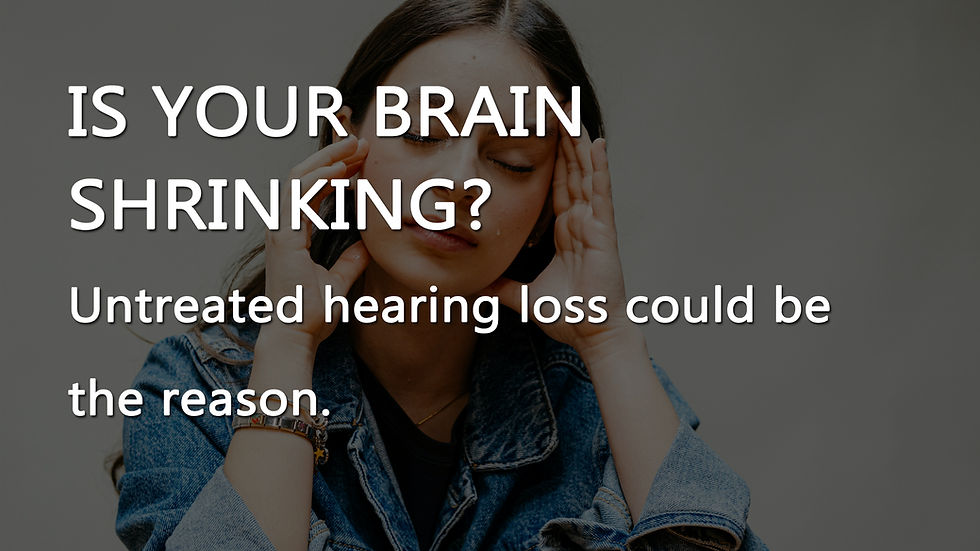Are you a visual listener?
- Elisa Nuevo Vallín

- Aug 22, 2022
- 3 min read
Updated: Aug 23, 2022
Have you ever heard of listening fatigue? You might suffer and not even know!
Listening or concentration fatigue is a little known concept and it does affect deaf children and adults, and people who have to concentrate hard for a long periods of time on signing, listening or lipreading, such as interpreters or people who have to speak in a foreign language.
People who stare for long periods at a computer or are extremely focused on a job (eg. Reading, writing, driving…) may be familiar with this feeling.

Listening or concentration fatigue is something that it could be really hard for people to understand, and that´s the reason I would like to talk about it and how it affects to deaf people or people with hearing loss.
If you are lacking a sense, it is a well know phenomenon for the brain to adapt and enhance other senses. Research shows that “deaf people from birth tend to be more sensitive to light or motion in their peripheral vision, compared with people who can hear”.
For a Deaf or Hard of Hearing (HoH) person the understanding process is different; the brain has to compensate the lack of hearing, work harder to process the same information, and pay more attention during normal day-to-day activities. .
Long periods of time signing, straining to listen to somebody or lip-reading can be exhausting, and it can be worst if someone talks too fast or the lighting is poor.
Their brain becomes overstimulated causing stress and finally fatigue. Deaf and HoH adults and also children must allocate more cognitive resources (brain power) in listening, lipreading or following a signed conversation than hearing people. That means that by using additional cognitive resources to listen leaves less energy for other tasks.

People need to be aware that anyone with hearing loss, even if it is mild, experiences listening fatigue and they have to work extra hard to comprehend the information. The focusing and the straining are exhausting, and on certain days it could be even overwhelming.
People who are forced to lipread suffer from burning, itchy and dry eyes, pain, blurred vision, headaches, double vision, and eyes fatigue (read how to banish eye fatigue with yoga for the eyes). Lip reading isn’t like reading a book. A human face is much more complicated - The face is not a book!
How to combat Listening Fatigue
To deal with listening or concentration fatigue there are some tips that you can do such us:
Take regular breaks, or even change the environment especially in noisy places. Some fresh air will help you clear your mind.

You can encourage people to get to the point in a conversation. Let them know that lipreading or signing is hard work.
Physical assistive technology may help reduce the effort of listening at school or at work. If you´re at school, you could speak to your Teacher of the Deaf (TOD) to see what they can do. If you’re in employment, you might be eligible for Access to Work. They do an assessment at your workplace and suggest things that may improve working with deafness.
Let people know about how you are feeling!
Don´t forget to relax and take the pressure off. Stress will only add up and make you more tired. Be kind to yourself!
BONUS TIPS:
Place your computer screen 20-26 inches away from your eyes.
Try the 20-20-20 rule. Every 20 minutes, look at something about 20 feet away for 20 seconds.
Blink more often. Try placing a post-it note that says “blink” on your computer as a reminder.
Use eye drops to lubricate your eyes.
To help prevent dry eyes while indoors, use an air cleaner to filter dust and a humidifier to add moisture to the air.
Alternate a warm and cold, wet compress onto your tired eyes. The warm compress helps relax the muscles around your eyes and the cold one revives your eyes. This combination will stimulate the blood circulation.
Take regular breaks and some fresh air as often as you can.
I really hope that you enjoyed this post and found this article useful ㋡ Thanks for spread the information with those who might be interested.





Comments